As a non-answer aside (the existing answers more than suffice), you might want to check out a whitepaper on the JVM garbage collection system if you are at all interested in GC. (Any, just google JVM Garbage Collection)
I was amazed at some of the techniques used, and when reading through some of the concepts like "Eden" I really realized for the first time that Java and the JVM actually could beat C/C++ in speed. (Whenever C/C++ frees an object/block of memory, code is involved... When Java frees an object, it actually doesn't do anything at all; since in good OO code, most objects are created and freed almost immediately, this is amazingly efficient.)
Modern GC's tend to be very efficient, managing older objects much differently than new objects, being able to control GCs to be short and half-assed or long and thorough, and a lot of GC options can be managed by command line switches so it's actually useful to know what all the terms actually refer to.
Note: I just realized this was misleading. C++'s STACK allocation is very fast--my point was about allocating objects that are able to exist after the current routine has finished (which I believe SHOULD be all objects--it's something you shouldn't have to think about if you are going to think in OO, but in C++ speed may make this impractical).
If you are only allocating C++ classes on the stack, it's allocation will be at least as fast as Java's.
